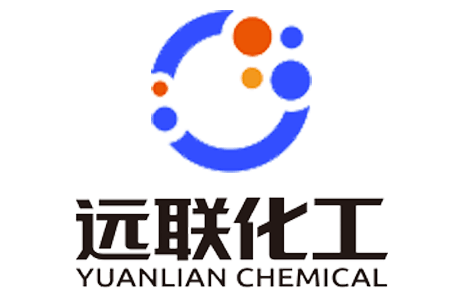
Chelating Agents: A Key Solution for High-Salinity Water Challenges in Oilfield Fracturing
The cost and control of oilfield fracturing operations often lie hidden in a single drop of seemingly ordinary water.
In hydraulic fracturing operations, water quality for formulating fracturing fluids has long been a significant challenge. When using high-salinity water sources like produced water or flowback water to prepare fracturing fluids, various polyvalent metal ions can interact with the hydroxyl groups on hydroxypropyl guar gum, leading to competitive coordination and the formation of clusters on polymer surfaces. This severely impacts the swelling and cross-linking performance of the guar gum.
This issue has historically constrained the enhancement of fracturing fluid performance and cost optimization. However, with breakthrough developments in chelating agent technology, this industry pain point has been effectively addressed. Through their unique molecular structure, chelating agents effectively complex metal ions in high-salinity water, significantly improving fracturing fluid performance and economic viability.
01 The High-Salinity Water Challenge and Chelating Agents' Solution
In oil and gas field fracturing operations, water-based fracturing fluids are the most widely used type. The quality of the water used to formulate these fluids directly impacts their performance and operational costs. Traditionally, fresh water has been the standard, but growing water scarcity and stringent environmental regulations have made the use of high-salinity water sources like produced water and flowback water a necessity.
These high-salinity waters contain high concentrations of metal ions such as calcium, magnesium, and iron, which can severely disrupt the stability of the fracturing fluid system. Specifically, these ions readily engage in competitive coordination with the hydroxyl groups on hydroxypropyl guar gum, forming clusters on the polymer surface that hinder gum swelling and cross-linking performance.
Chelating agents provide an effective solution to this challenge. A chelating agent is a chemical additive capable of forming stable complexes with metal ions. Its molecules contain multiple ligand atoms that can "grab" metal ions firmly.
Research shows that with the addition of specially developed chelating agents, a hydroxypropyl guar gum fracturing fluid formulated with high-salinity water can achieve proper cross-linking within 3-4 minutes. The resulting cross-linked gel exhibits excellent elasticity.
Under harsh conditions of 90°C and a shear rate of 170 s⁻¹, the fluid viscosity can remain above 100 mPa·s after continuous shearing for 1.5 hours, demonstrating superior temperature resistance and shear tolerance. This technological breakthrough paves the way for the widespread use of high-salinity water in fracturing operations.

02 Technical Principles: Synergistic Enhancement of Fracturing Fluid Performance
The role of chelating agents in fracturing fluids extends beyond simple ion complexation. Modern chelating agents, through precise molecular design, enable multi-dimensional enhancement of fracturing fluid performance.
By specifically binding to metal ions, chelating agents prevent these ions from undesirable interactions with guar gum molecules, ensuring proper gum swelling and cross-linking. This mechanism is crucial for establishing the base viscosity of the fracturing fluid.
In advanced fracturing fluid systems, chelating agents also exhibit a synergistic effect with cross-linkers. For instance, the polyvalent anions of certain anionic chelating agents can create a secondary cross-linking effect in organically cross-linked hydroxypropyl guar gum fluids via electrostatic interactions, further increasing cross-link density.
This innovative mechanism allows for a tenfold increase in fluid viscosity without increasing the concentration of guar gum or the primary cross-linker, while maintaining excellent thermal and shear stability.
The choice of chelating agent also directly affects breakage efficiency. Studies indicate that compatible chelating agents work well with breaker systems, enabling the fluid to break quickly and thoroughly after its job is done, minimizing formation damage. Specific proprietary chelating formulations can reduce residue content to below 200 mg/L, less than a third of that seen with conventional fluids.
Advances in chelating technology have also facilitated the development of ultra-low-concentration guar gum systems. Using long-chain, multi-point chelation to extend cross-linker chains, researchers have successfully lowered the cross-linking threshold for gelling agents to 0.10%, significantly reducing material costs.
03 Global Application Cases Demonstrating Proven Effectiveness
The value of chelating agents in fracturing fluids has been validated through field applications in various regions worldwide, demonstrating both technical and economic benefits.
In field trials conducted in the North Sea and Middle Eastern fields, low-concentration fracturing fluid systems incorporating chelating agents achieved a 100% operational success rate across numerous wells. Notably, guar gum consumption was reduced by 30-50%, and formation damage was decreased by approximately 50% under comparable reservoir conditions.
Further applications in shale plays like the Haynesville and Vaca Muerta, as well as in other conventional fields, have confirmed the broad adaptability of the technology. In these applications, production rates from test wells reached 2.5 to 5.3 times that of offset wells, highlighting the effectiveness of chelating agents in reservoir protection.
Offshore applications have also yielded significant results. A high-temperature chelated guar system developed for high-temperature, high-pressure, high-salinity reservoirs demonstrated a temperature tolerance of up to 150°C. Using a 0.5% gelling agent concentration, the fluid maintained a viscosity of over 180 mPa·s after 2 hours of shearing at 150°C and 170 s⁻¹.
This system was successfully deployed in multi-stage horizontal well fracturing operations, achieving initial production rates exceeding 100 cubic meters per day.
Regarding flowback water reuse, chelating agents play a key role. A treatment process involving breakage/viscosity reduction, de-emulsification, flocculation/sedimentation/filtration, and component adjustment, combined with the use of efficient chelating agents (0.15-0.30%), enables the reuse of flowback water, reducing freshwater demand and environmental impact.

04 Future Trends: Eco-Friendly, Efficient, and Diverse Solutions
As oil and gas exploration moves into deeper, more complex formations and environmental regulations tighten, chelating agent technology faces new challenges and opportunities. Future development will focus on diversification.
The development of environmentally friendly chelating agents is a priority. Traditional agents like EDTA, while effective, have poor biodegradability and potential for environmental accumulation. Newer green alternatives such as GLDA (Glutamic Acid N,N-Diacetic Acid), which are readily biodegradable, are gaining preference.
Technology for ultra-high-temperature reservoirs is advancing. Exploration in deep formations requires fluid systems stable above 150°C, demanding chelating agents with superior thermal stability. New molecular structures capable of withstanding higher temperatures are under development.
Smart chelating agents represent another promising direction. These agents could release their complexing capacity intelligently based on downhole temperature and ionic environment. For example, they could rapidly complex ions during fluid preparation, release some ions moderately to facilitate cross-linking, and fully release ions later to promote breaking.
Composite chelating agents are also a research focus. Future agents may not be single components but composite systems comprising various compounds with different functional groups, capable of addressing multiple metal ions simultaneously. Advanced formulations already include components like sodium pyrophosphate and phosphonates.
As conditions for oil and gas exploration become more complex, demands on fracturing fluid technology increase. Chelating agent technology will continue evolving towards greener, more efficient, and diverse solutions. We anticipate the emergence of more biodegradable, thermally stable, and intelligently responsive advanced products.
The importance of chelating agents as key additives in fracturing fluids is set to grow, providing sustained technical support for efficient field development. For technical decision-makers in oilfield chemistry, investing in advanced chelating agent technology represents a strategic advantage in the future market landscape.
Yuanlian Chemical specializes in the production of polyaspartic acid (PASP),tetrasodium iminodisuccinate(IDS), GLDA, MGDA etc. with stable quality and excellent quantity!





Contact us